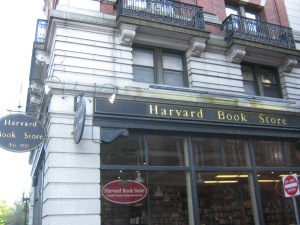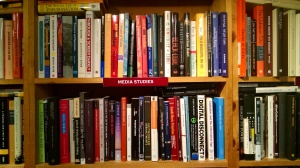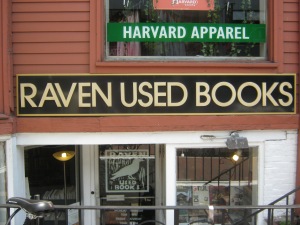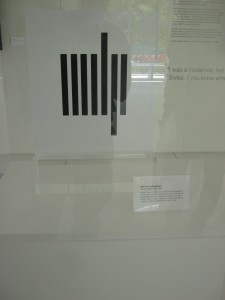Yes, you read that correctly: democratic government invariably leads to the rule by “demagogues” who manipulate the most immoral segments of society.
The core of this immoral coalition consists of “the lowest common denominator” – the “‘mass[es]’ in the derogatory sense of the term.” The masses consist of the least “educated” and least “intelligent” driven by “primitive instincts.”
The unethical leaders add to this core the “docile and gullible.” They are easily manipulated by propaganda that creates “a ready-made system of values if it is only drummed into their ears sufficiently loudly and frequently.”
Their “passions and emotions are readily aroused” by demagogues “who will thus swell the ranks of the totalitarian party.”
The third component of the totalitarian troika is the “most important negative element.” These are the murderous bigots motivated by “hatred of an enemy … the envy of those better off.”
Author: The Mitr
Politics and politicians
But politics and politicians are two separate things. Our whole lives are political, they just don’t realise it.
“How will I ever get out of this labyrinth?”
“People expected me to become a high-ranking official in the government or a big company, but I don’t think just because I chose not to become the expected it gives anyone a right to call anyone’s life a failure,”
Something to Hide
You probably do have something to hide, you just don’t know it yet.
via Wired
On Design
Design is both the disruptor and being disrupted. It’s disrupting markets, organizations, and relationships, and forcing us to rethink how we live. The discipline of design is also experiencing tremendous growth and change, largely influenced by economic and technology factors. No longer an afterthought, design is now an essential part of a product, and it may even be the most important part of a product’s value.
Source: Experience design is shaping our future – O’Reilly Radar
Dissent Is Treason

The year Nineteen Eighty Four is long past us, in fact next year it will exactly 30 years in the past. But if we consider the dystopic vision of George Orwell from the novel, seems with each passing day we are approaching it with ever increasing pace. As if prophetically the Orwell thought about in the middle of last century are coming true. It is as if those in power are taking cues from Orwell’s books.Some famous lines from Nineteen Eighty Four included the following:
War is Peace Freedom is Slavery Ignorance is Strength
And
Big Brother is Watching You
Two more individuals also told us something similar. One is a comic book writer and other is a paranoid hacker in the true sense of the word. Alan Moore in V for Vendetta tells us a story of not so distant future, which is very Orwellian. He says in an interview, it was idea in V, that there should be cameras on streets, which is what is implemented in London now. This is like an unintentional self-fulfiling prophecy. Though Alan Moore makes his case, it is after all a fictional story. Given that it might happen, but it is fiction. As is the case with Orwell’s works though fictional it has some real and frightening take home points, so is also with Alan Moore’s V for...
I will now come to the hacker. Richard M. Stallman, aka RMS aka Father of Free Software movement. Some of you might be surprised when I am making this claim. What does software have to do with dissent, or for that matter treason? But there are good reasons to make and substantiate this connection.
About the poster:
The idea behind this poster comes from Nineteen Eighty Four by George Orwell and current affairs in the world. Across the world it seems that any dissent against the government or those in power is seen as treason. Hence “Dissent Is Treason”This rhymes thematically very well with other in Orwells book which include “War is Peace. Freedom is slavery. Ignorance is strength.”
Similarly no matter how wrong the government is doing, however brutal they may be acting any voice of concern is treated as one would treat treason. The questioning of government and its actions which is essential in a healthy democracy is itself under attack.
In this poster the deer has one of its horns twisted in a way which is not normal. This “abnormal horn” metaphorically represents the view point which majority does not see or share. This can be concern for environment or disadvantaged groups, or against nexus of corporates and politicians. The list is endless. But any deer with such a horn, will be shunned in deer society. Similarly in our society usually people who have points of view which conflict with powers to be are treated as traitors. Their acts of exposing the guilty as that of treason. But in fact such individuals are people with extraordinary courage. They include people like Julian Assange, Edward Snowden and countless others whom wedo not know but are thankful.
The deer image is from an old issue (c. 1870) of Journal Of Bombay Natural History Society.
Bookhunting in Boston – Week 1
Bookhunting in Boston!
(well, technically Boston and Cambridge)
Week 1
I visited Boston for two weeks. As a bibliophile I was looking forward to the bookstores that the town has. As I am always on a budget, the aim was to find used book stores. So I got some recommendations from Louis and read some reviews. So have visited these stores so far (in order that I visited them)
Harvard Book Store
There was some author signing event at the Harvard store, where people were waiting in a huge queue for the author to visit. The Harvard Store has a section in the basement in which they have used books. The prices are reasonable starting at ~ $2. There are some new books with heavy discounts also. The sections are arranged according to subjects, but you may find books out of their subjects in some parts. The science/mathematics section was okay, nothing really great, though I bought quite a few. One of the gems was a book by Lewis Carroll for $2.
The upper section has the new books categorized by subjects. But unfortunately the physical sciences section was dumped in an aisle between two sections to make space for the author signing event. Anyways, the books I brought from there are below:


Raven Used Books
Raven books visit was unplanned, but was on the agenda. Fate, I had to visit this shop.
We went to a Staples shop after Harvard Book Store. Right bang opposite this we spotted the Raven Used Books.

A closer look.

Inside the store, which is in the basement of the building book shelves full upto the ceiling of the store greeted us. The philosophy section was categorized according to author list. The collection was extensive and very well organised.
I got lost and forgot to take any pics. But Alpesh did, and below are his pics from the store.




I got these two books from Raven. They had a nice poster and bag for the store, which I have forgotten to take a photo of. Next visit in that region sure to take it.

Update: Raven poster and closeups are below.



Museum of Fine Arts

The Museum of Fine Arts in Boston had a free entry day so we went there. Nothing specifically was on the agenda. When we went there The Great Wave greeted us. So it was here that I came to this was a painting by Hokusai. There was a Hokusai exhibit going on. Serendipity. I had seen the great wave as an fractal, but did not know about its origins. So here it was in full glory! The presentation was great.


Anyways, after roaming in the museum for a couple of hours, we got to the book store. There were many books that I would have wanted but they were fairly expensive. Just before I was leaving I got a gem A Tolkien Treasury for $5, in a reduced price section.


The MIT Press Bookstore
The minimalist and the cleverly designed logo of the MIT Press is something that cannot be easily forgotten. I discovered the MIT Press shop by chance. We were walking out from Kendall MIT Train stop towards I saw the logo and bingo there was the shop.
I was in a hurry so did not go in the shop.
The next day we went to get coffee near the MIT store. And we saw two trays of books outside the store.

The prices were in the range of $3-$5. It had a small notice which said pickup your book and pay inside. This was cool. A sale at MIT Press shop!

Evening we went back to the store. The store is well stocked, and also has books from other publishers (I had thought it would be only MIT Press books). There was a section with discount.

The reviews of the books were handwritten small notes. You can see it in the picture above.
I got Mandelbrot’s biography for $6.95. And three other books. Books bought are shown below.

Update: During the MIT Media Lab visit came to know the designer of the MIT Press logo. It was Muriel Cooper, who is also a co-founder of the MIT Media Lab.



Commonwealth Books and Old Prints
This was another serendipitous find. I had read it in the reviews. But when we went to downtown Boston, we were not looking for it. Inside a little lane I found this shop waiting for me.

This was one really well stocked shop. With books till ceiling all around. Books by subject, and authorwise too. Below are a few snaps from the candystore of books. The prices were okay, $6 was the minimum. They also have old prints kept among the books. The philosophy section was huge. The science section was a bit of disappointment, though there were some good books on HPS there. I got a newtons biography in the Canto series from there.


The store also has a resident cat named Dusty.



The arts section was great. I got a book on Durer’s life and work. And hardbound book of Graphic Works of M. C. Escher.

This was a really good find.
Honor System

Honor System
Books are priced as marked by the sticker on the front cover. If you find a book that you want please pay for it by putting the money in this box. I have been selling books on the Honor system in Cambridge for the past ten years. Thanks to this amazing community & good people like you. Thanks
This is something that I discovered while walking out of the Harvard metro station. Serendipity. There was a spread of books under a tree with no seller to be found around. There was a box in the centre with a little handwritten sign next to it. The sign is produced above.
I collected a bookbinding book by Dover for $2. Dropped two one dollar coins in the box and was happy!
Next post adventures of next week!
Antilibrary of Umberto Eco
The writer Umberto Eco belongs to that small class of scholars who are encyclopedic, insightful, and nondull. He is the owner of a large personal library (containing thirty thousand books), and separates visitors into two categories: those who react with “Wow! Signore professore dottore Eco, what a library you have! How many of these books have you read?” and the others — a very small minority — who get the point that a private library is not an ego-boosting appendage but a research tool. Read books are far less valuable than unread ones. The library should contain as much of what you do not know as your financial means, mortgage rates, and the currently tight real-estate market allow you to put there. You will accumulate more knowledge and more books as you grow older, and the growing number of unread books on the shelves will look at you menacingly. Indeed, the more you know, the larger the rows of unread books. Let us call this collection of unread books an antilibrary.
Black Swan – Nassim Nicholas Taleb
I have had a similar experience about myown book collection. People expect that if you have books then you must have read them. But this is exactly what I hold the books for, a reference tool for further knowledge. And then they have a beautiful word in Japanese which describes the spirit in which you buy more unread books.
Tsundoku:buying books and not reading them; letting books pile up on shelves floors or nightstands
Faking Feedback
How to score brownie points over one’s opponents?
Or
How much lower can one stoop academically?
Disclaimer: This story has a no particular names, feel free to fill in what you like. This is not a work of fiction.
This is a story that I heard recently. Though the events mentioned in the story are almost 2 decades old. The story is set circa 1996. The
story is an esteemed academic institution in the state of UP.
In this institute in a particular department, among many other faculties there were two protagonists of our story. For the sake of keeping a track of their activities let us call them X and Y. Now as it happens in many academic institutes, and in between many academics, X and Y did not go along very well. Added to that they say that X was a bit eccentric to put it mildly and a crackpot to put it okayishly. Less said about Y is better. It would be rather revealed by actions. They would fight bitterly and did not see each other in a good light. Now, it so happens that in this institute at end of the semester the students are given feedback forms for each of the courses that they take. For this purpose another faculty member distributes the forms on the last day of the course. These forms are collected, sealed and given to the HoD for evaluation. Based on the feedback the HoD calls the faculty member to discuss issues worth discussing. This entire process is supposedly confidential and the discussion happens after the exams are over.
Now it so happened that in this fateful year, Y went on the last day of X’s class to give the feedback form to the students. The forms were duly collected, sealed and given to the HoD. Now comes the interesting part of the story. When the HoD started to read the feedback forms, he noticed that a few of them were a bit too harsh and nasty. Now it so turns out that though X was a bit eccentric, but was quite popular with the students. So this naturally created a doubt in the HoDs mind. Why only this year the students have given a bad review of X?
So the HoD glanced through the feedback forms which were a bit too negative. And guess what! He discovered that the handwriting in all of them was uncannily similar. How can different students writing negative feedback have all the same handwriting? Well one explanation is that they all conspired to do so. Practicing for hours on end to make sure all of their handwriting are similar! But an easier one is that a single person must have written all these negative reviews! Keeping this in mind the HoD compared these negative feedback forms with the handwriting of people he knew. And then guess what it matched the handwriting of someone from his department!
Now you will get 10/10 points if you have already guessed what happened next. It so turned out that the handwriting on the negative feedback sheets matched that of Y. After this Y was summoned by the HoD to explain this uncanny resemblance between the handwritings. Well Y did not have much of an answer, even if any answer was given, it is not known to us. Perhaps Y will remember this episode for life. So after this Y was punished for faking student feedback form. This perhaps would be unique charge against a faculty in a premier institute. The punishment was of banishment from the department for one full semester. When he came back he was super embarrassed due to this. Or as they would put in Hindi किसी को मु़ह दिखाने लायक नही राहा
And it so happened that this episode was followed by exit of Y from this institute a few years later. It is said that in the new institute that Y joined he continued with his old ways of deceit and treachery, and of cheap tactics. The only difference being that there was no one here to challenge Y and his cheap ways. The sad part is that this continued for over a decade and Y was able to form an empire at the new institute. But then the Indian academia has many such people.
Reflecting on this I think how much lower can one fall academically to score brownie points over one’s opponents? On another hand I feel like laughing at botched up attempts to do this, reminds me of Rowan Atkinson’s Black Adder.
What kind of person would indulge in this behavior? Is such a person fit for any confidential work? And why should any academic institute harbour such a person?
This story needs to be spread, told and retold for Y is still out there…
Research and public outreach
I like to think that the book writing, public outreach activities can be not oppositional to doing research. I have been inspired to do research projects by thinking about different ways of talking to the public, and I think that you can get the word out there even to your own scientific colleagues by writing a good book.
via Sean Carroll| Layers Of Reality |.





